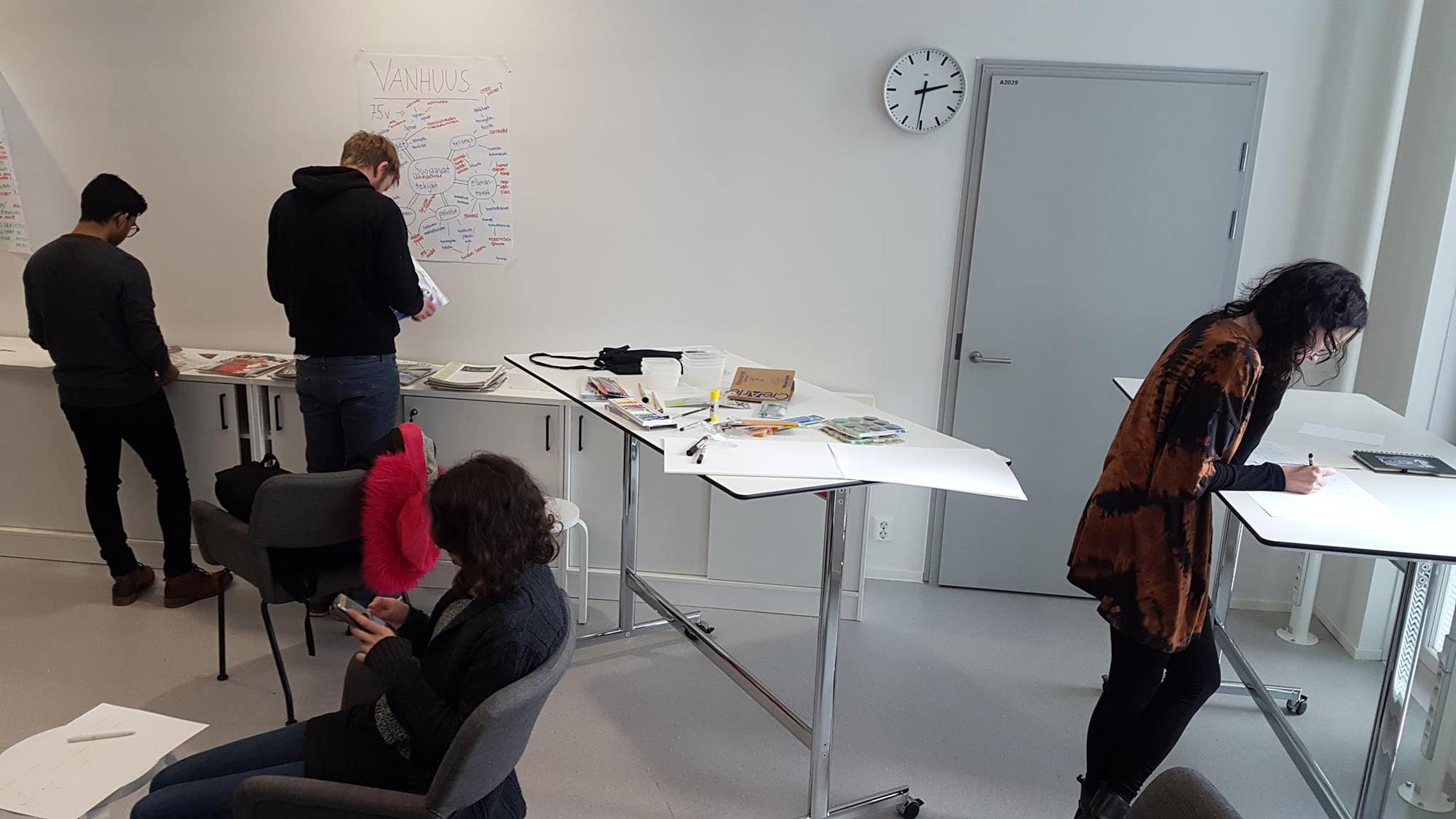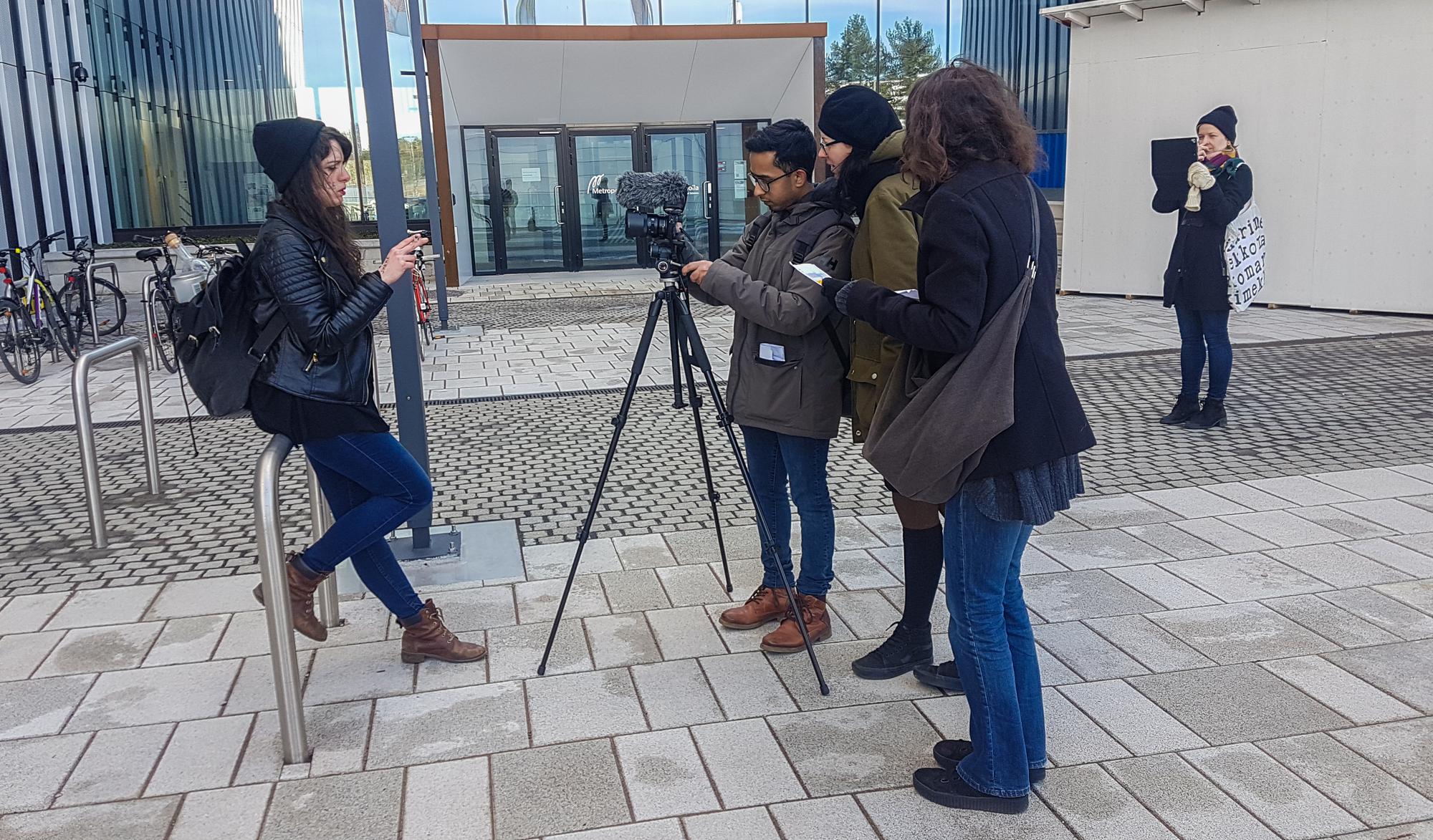FICTIONAL FAMILY TREE: STORYTELLING AND SHORT FILM PROJECT
Study on burdens, potentials and positive resources transmitted across generations
by Taina Kilpelä & Elina Mäkilä
Heavy Bags from Elina Makila on Vimeo.
When we are born in a certain time and place as members of particular families we become marked by the people and relationships that precede us. Each of us carries these past generations in us in the form of burdens, potentials, and positive resources. By exploring and sharing this intergenerational experiences, we get a chance to understand ourselves and others. This was the premise of the project.
Most of the students did not have any expectations regarding the course. Some of the students were wondering if we can really manage to create a film in such a short time? Others thought how would it feel like to share one’s own family background with others. During the course that consisted of seven meetings, we immersed ourselves in a creative process of filmmaking and storytelling.
Course started by getting to know each other and by exploring our personal family trees using a collage technique and sharing family histories with a group. Main guideline and principle of the process was that every participant decided how openly they want to work and share their own personal background. Sharing was not obligatory if you were not willing to do it. International background of our group made this process very interesting as family roots of the participants were spread all over the world. Backgrounds and stories were different but on the other hand there were surprisingly many similarities in family histories.
“It was captivating to hear about everyone’s story, and the way they presented their family trees. I felt that creativity, freedom and communication were vivid during the class. It immediately appeared to be a profound and exciting project, individually, collectively and professionally.” — Student’s learning diary
This type of working process requires careful facilitation and instruction so that participants feel comfortable and safe sharing their personal and sometimes sensitive stories. This could not be emphasized too much as sharing was the backbone of the whole process. After the course many of the students gave feedback that we were able to create safe space, where one’s own experiences could be shared safely.
“From all that, what I learnt was that it is easier to do things collectively. When given a safe place; people feel safe to share/voice their opinions; it was a good thing to learn. I learnt that creating a safe place was not easy as I thought; it takes time, effort and trust, one thing goes wrong, and everything falls apart. I learnt the basics of how to create a safe space.” — Student’s learning diary
The idea of the course was to combine family tree technique with elements of ethnofiction filmmaking. Ethnofiction is a method that is usually used in ethnographic filmmaking. Initially ethnofiction is based on genre of cinéma vérité founded by a French filmmaker and anthropologist Jean Rouch. Method was further elaborated by visual anthropologist Johannes Sjöberg. Ethnofiction combines documentary and fiction and gives participants of the process creative tool for handling challenging and many times invisible issues.
Short film Heavy Bags that was created during the course was fictional and doesn’t cover any particular personal story. Storyline of the film was based on a fictional family tree that covered three generations and was created together with the students. Fictional family trees, characters and stories created around them functioned as a base for our participatory film script. Heavy bags told a story of burdens and positive resources transmitted from one family member to another over generations. Through fictional and real family stories the project processed our commonly shared past, present and future.
Collective process was at the core of all teamwork. Every step was a learning process that encouraged dialogue, negotiation, creativity, sharing and active participation among every member of the group (including instructors). Everyone could also use their strengths and learn from others in a filmmaking process. Together we found an interesting way to depict transmission processes over generations. Including personal aspects, creating script and learning basic techniques of filmmaking made the course experiential and participatory. We experienced that using methods of experiential learning helps to explore transmissions between generations and relationships between individuals, culture and history. In the course students also learned basic filmmaking skills.
“When I think about the work process that this method provided I am amazed. A group of strangers have managed to create a real product inside the barriers of the method. Something is working in the method. I think that the group work was the key here. The group seemed to be working even better under time pressure. I was sceptic before we started the process but now I see it is possible.” — Student’s learning diary
This method has a lot to offer if the process is given enough time. Sharing, group formation, building trust and creating safe space demand time and effort, but once these elements are in place, results can be very rewarding.
Storytelling, participatory filmmaking and experiential learning process as a whole increased understanding of generational transmission. We assume that it can be very useful for students in their further careers in the field of social work.
“In closing I would say that coursework and the readings and media examples have provided a thorough understanding of ethnofiction and experiential learning. I think the time spent in the course allowed me to sharpen my own perspective with regard to identity and forced me to reimagine what social services can be rather than what it should be.” — Student’s essay
{style='width:100%; text-align:center;'}









